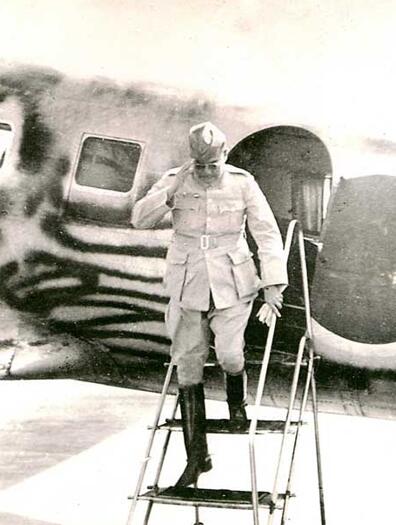The enigma surrounding Netaji Subhas Chandra Bose’s disappearance continues to intrigue and mystify, prompting renewed scrutiny. In their book The Bose Deception: Declassified, authors Anuj Dhar and Chandrachur Ghose tackle this issue head-on, supported by extensive research and an in-depth analysis of over 2,000 declassified documents from India, the UK, the USA, and Taiwan. Their compelling investigative work unravels layers of secrecy, revealing a long-standing deception that has captivated India for decades. Now, they present a new claim regarding Bose’s death, challenging the long-held narrative.
The release of over 1,300 secret files by the Indian government in January 2016, including documents from the Prime Minister’s Office (PMO), Ministry of External Affairs (MEA), Ministry of Home Affairs (MHA), and the Cabinet Secretariat, opened up new avenues for understanding this historical mystery. These files exposed that, even after seven decades, a vast amount of classified information surrounding Netaji’s disappearance was still being withheld. Dhar and Ghose delve into this treasure trove, scrutinizing the official account of Netaji’s death in a plane crash in Taiwan—a theory rooted in government investigations but far from universally accepted.
The authors argue that the Modi government, known for its openness to fresh inputs, should examine this new information, which they believe could “change everything.”
In 2017, a reply to an RTI query supporting the plane crash theory sparked a heated debate. In response, the Ministry of Home Affairs clarified that this information was based on the decisions of the Manmohan Singh government, stating that “any other credible inputs would be examined.”
According to the Japanese version, Bose boarded a plane with Lt. General Tsunamasa Shidei on August 18, 1945. The plane crashed at Taipei airport, killing both men. Their bodies were cremated, and the ashes sent to Tokyo, all happening just days after Japan’s surrender, when Netaji was facing imminent capture.
However, Chinese war historians cited by Dhar and Ghose assert that Lt. General Shidei was not with Netaji at that time. He had died in a completely different incident under different circumstances.
The Japanese claim of Bose and Shidei dying in the same crash was endorsed in 2006 by the Manmohan Singh government, which dismissed the findings of the commission led by former Supreme Court judge MK Mukherjee. Justice Mukherjee’s commission had suggested that the Japanese fabricated Netaji’s death to cover up his escape to Soviet Russia. The commission further argued that a Japanese soldier’s body was passed off as Bose’s, and Shidei’s death remained unproven.
According to Dhar and Ghose, the new evidence from Chinese historians suggests that the death of Shidei was used by the Japanese as a cover-up for Netaji’s escape toward Soviet Russia. When considering all the facts at hand, they believe this revelation undermines the entire plane crash theory.
Read More: https://tfipost.com/2018/10/netaji-ina-01/
The Japanese version of events, upheld by the Manmohan Singh government, was contradicted by Chinese historians, including Zhang Zishen and Xue Chunde. These historians, in their 2009 book The Pillar of Shame in History: A Complete Record of the Deaths of 171 Japanese Generals Who Invaded China, claim that Shidei’s plane was shot down by Chinese forces. On August 18, 1945, Shidei was flying with Major General Suguru Sato when their plane was intercepted by Chinese fighter jets. The Japanese plane refused to land and was subsequently shot down, crashing into the East China Sea. This version of events is supported by numerous Chinese historians, who recount it in their writings and have won national awards for their works.
Dhar and Ghose, who have no reason to dispute the Chinese account, argue that the Japanese and Indian governments have concealed facts, as demonstrated by Justice Mukherjee’s report. They note that while there is no evidence that Netaji and Shidei arrived in Taipei together, numerous eyewitness testimonies contradict each other about Shidei’s fate after the crash. There is no photographic evidence of Netaji and Shidei together, and reports about Shidei’s cremation in Taipei are inconsistent. Moreover, Japanese government records concerning Shidei’s death have not been made available, and the Indian government’s files on the matter are missing.
The first investigation into Netaji’s death was conducted by the US Army, which found no direct evidence to support the plane crash theory. This assessment, which contradicts the official narrative, has been concealed by the Indian government, along with other findings that go against the plane crash theory.
Dhar and Ghose urge the Modi government to raise the issue of Shidei’s death with both China and Japan, as the two versions of the story cannot be reconciled. “The Japanese claim that both Netaji and Shidei died together, while the Chinese say that they killed Shidei in a separate incident. These two claims cannot be reconciled,” they argue. “The excuses given by the Manmohan Singh government for the absence of records regarding Bose’s death cannot apply to the death of a senior Japanese general.”
